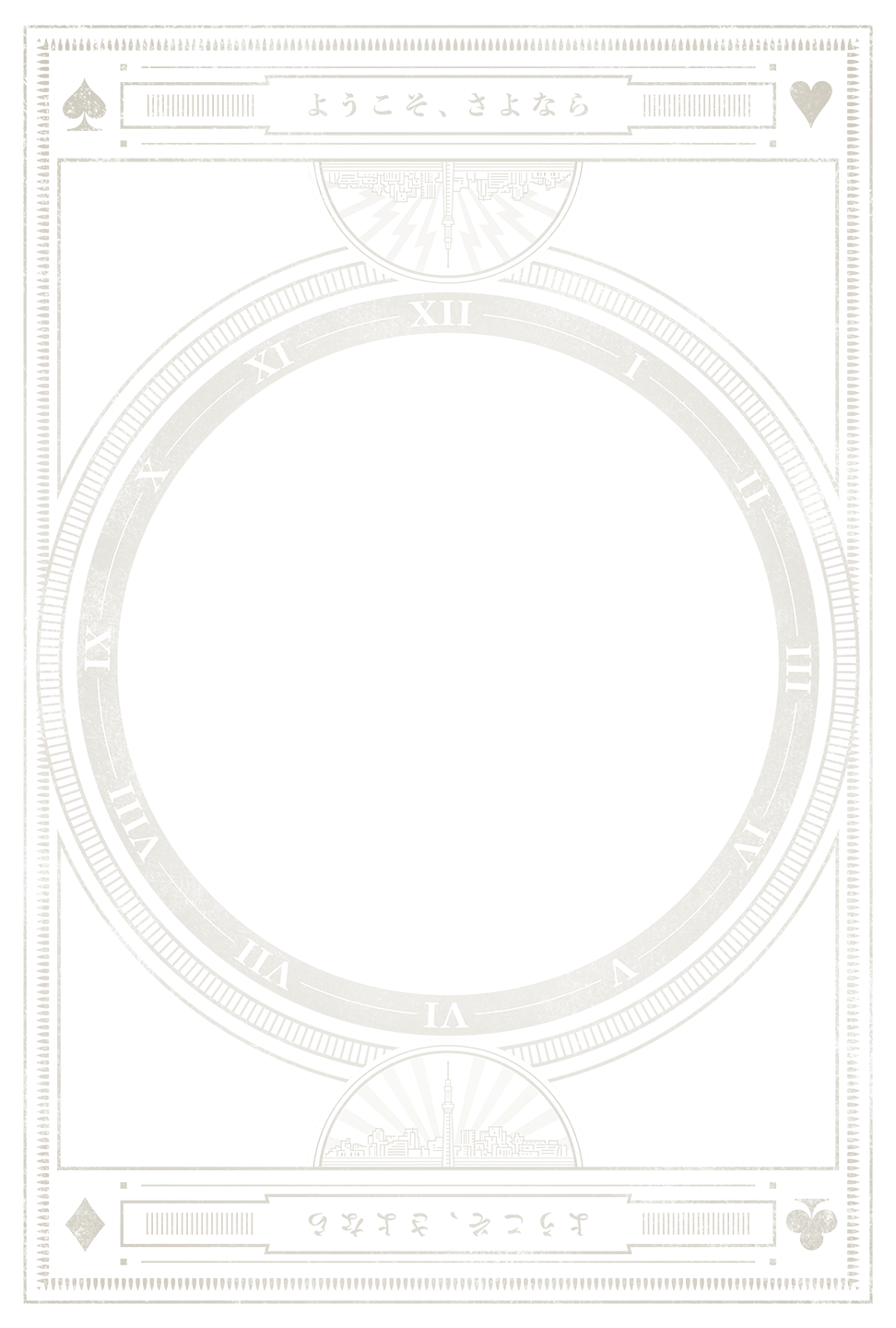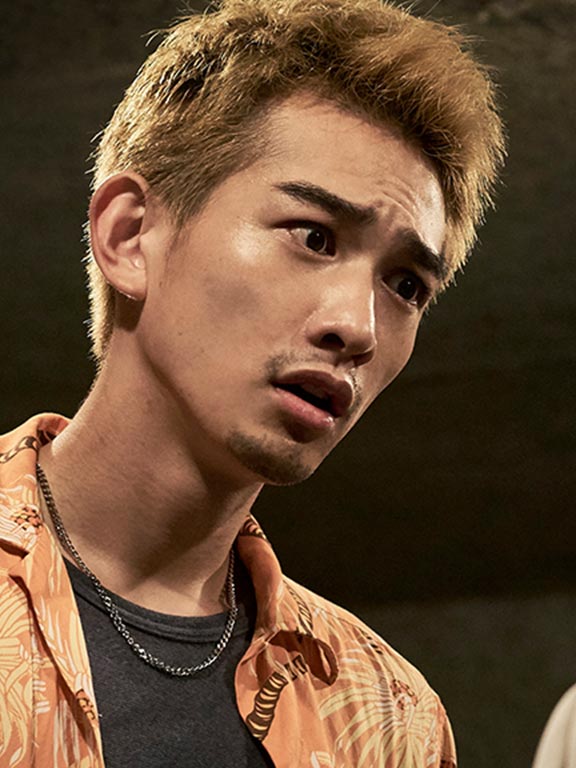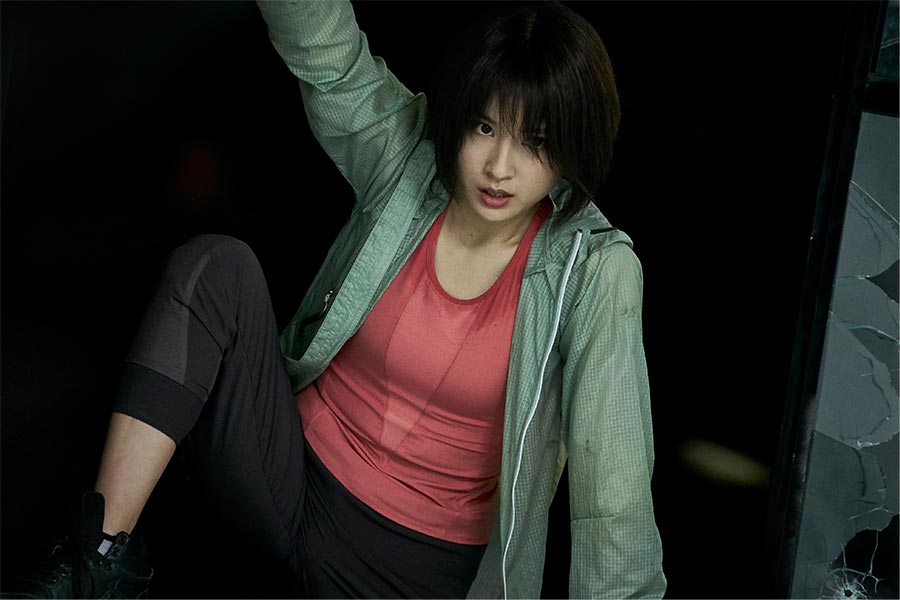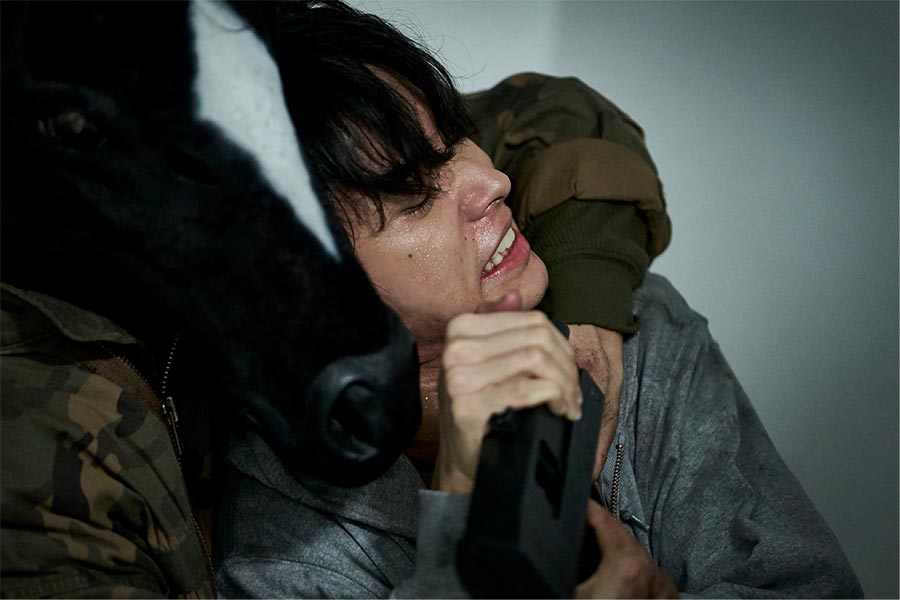





Shibuya, Tokyo has suddenly become empty. The Netflix Original Series Alice in Borderland is an incredible work of visual storytelling that subverts viewers' expectations at every turn, unfolding in exciting and chaotic twists.
Ryohei Arisu doesn’t have his dreams and loses any motivation for living and he has grown up by being compared to his talented younger brother. His two best friends since high school, office worker Chota and bartender Karube, also waste away their days in despondency. Unable to find meaning in life, one day Arisu and his two friends are suddenly thrown into the "Borderland." Shocked at finding the Shibuya they know so well completely empty, these three enjoy freedom without the judging eyes of family or annoying bosses. However, when a GAME suddenly begins, one that puts their very survival at stake, they realize that the world has completely changed. It appears that in order to survive in Borderland, they must participate in and win assorted GAMES. Perplexed by these illogical circumstances, Arisu taps into his incredible mastery of games to awaken his skills of observation and judgment and escape this crisis with his friends. Soon they meet mountain climber Yuzuha Usagi, who navigates the GAMES alone. Rather than fight solely for their own survival, they decide to work with others so that everyone can succeed in the GAMES.
Set in an empty dystopian Tokyo, this is a tale of young people who had been unable to find meaning in life, but now grow and confront what it means to live like never before. Events in this series are as unexpected as they are stunning. Experience the thrills of an unknown world that gradually reveals itself. The series offers an all-new experience of GAMES which require players to use their minds and bodies at full power in order to beat, and shows a new world carefully crafted through visual effects, production design and camera work. Human drama unfolds as characters with unique personalities are pushed to their limit in the strange world. All these factors and more will have viewers glued to the screen.
Kento Yamazaki and Tao Tsuchiya star together for the fourth time in this series, which is directed by Shinsuke Sato, a filmmaker always ready to take on new challenges. The series promises an excitement which no movie has yet delivered and an exhilaration that no drama series has yet achieved.
A new drama series presented on a grand scale as a Netflix Original Series from Japan, Alice in Borderland finally arrives. The global release of all eight episodes will boldly revolutionize the history of visual storytelling.



























Kento Yamazaki and Tao Tsuchiya co-star in this dramatic series illustrating the characters who are driven by an intense desire to live amidst the most extreme of circumstances. After working with director Shinsuke Sato on the film Kingdom (2019), Yamazaki teams up with him again, bringing life to the role of Arisu by tapping into the many acting skills he has cultivated across varied performances. Arisu wasted away his days without any goal in life until he is forced into a dire situation in a strange world, where his latent observational and decision-making skills blossom. “Together (with Yamazaki), we were able to create a character who is nothing filled with an emptiness that everyone has surely felt at some time,” says Sato. Yamazaki's charisma helped create a character who all viewers will identify with at some level. Performing with Yamazaki for the fourth time, Tsuchiya was tapped to play the role of Usagi, a young woman who at first took on “GAMES” alone. Her silent strength supports Arisu, who is overly sensitive and tends to lose direction. Exhibiting her incredible athletic abilities for this role, Tsuchiya projects Usagi’s will to continue searching for the meaning of life in any dire situation. As Sato says, “the true strength which comes from not minding to show weakness” is expressed through Tsuchiya’s supple passion.
The mysterious Chishiya (Nijiro Murakami) quickly notices the unusual skills Arisu and Usagi possess. He is an intellectual who emits an aura of calm, in stark contrast to Arisu. Office worker Chota (Yuki Morinaga) and bartender Karube (Keita Machida) have been friends with Arisu since high school. “Arisu, Chota and Karube seem to be three equal parts of myself,” says Haro Aso, the original graphic novel artist of the series. Indeed, these three characters have a chemistry and ability to complement one another, as though they share the same mind.
The top-level cast has come together to tell this tale of young people who were previously unable to find meaning in life, but are now forced to confront what it means to live like never before, help one another, overcome themselves, and grow in order to survive.


The series opens with an overwhelmingly bizarre setting where people have disappeared from Shibuya and the characters must now participate in mysterious GAMES in a completely changed world. From the very start, viewers are drawn in by their own fear of everyday life being turned on its head, and the idea that such a thing could actually happen.
The rules of the GAMES seem simple at first glance: you will either Live or Die, and that outcome will be determined by games everyone has played as children, such as Tag and Hide and Seek. The GAMES test the instinctive survival skills we all have. Viewers end up asking themselves what they would do in the same situation. They are drawn into a realistic game world, playing one massive game. This truly is a realistic puzzle-solving drama.
Sato says the series is “a tale of people struggling with the question of how to live in an unpredictable world.” At the same time, he also constantly kept in mind why the characters must play these GAMES. He sought to create a series where “each GAME exposes and intertwines emotions, conflicts, and the past.”


Constantly compared to his talented little brother, the protagonist Arisu is unable to find meaning in life and spends much of his time despondent. Without any ambition or advantages, this video-game-obsessed young man was filled with a sense of emptiness that many of his contemporaries can identify with. But then, using his one unique skill, he is able to unlock his unexpected strengths in the GAMES.
Each time Arisu wins a GAME, he exposes his own weakness and the past he had ignored, and grows as he learns to accept himself. This is also true of the other protagonist, Usagi who takes on the GAMES alone at first. She rediscovers the meaning of life through Arisu's actions. In this world of extremes, bonds form between all the players, and as a result they change and grow. Winning a GAME means getting to know oneself, overcoming the difficulty of accepting others as they are.
One important theme rooted in the core of the original graphic novel is the fear that everyday life could be stolen away. The comic is 10 years old, but the story remains incredibly timely, particularly now. What is the point of living when we may die tomorrow? What desires drive us to fight for survival? Viewers will come up with their own answers as the characters confront these questions.
Complete realism was the most important goal when creating the “Borderland”. This carefully crafted visual world was made possible thanks to Sato's team of visual effects and production design artists. “The director was committed to using Shibuya Scramble Crossing (in Tokyo), Japan’s most famous intersection,” says art design director Iwao Saito. Since the plan was to film Arisu and his friends running into the train station and seeing an empty Shibuya in a single cut, the team had to create everything that would appear on-screen. The filming took place on a massive open set in Ashikaga city, Tochigi Prefecture. The set was constructed in conjunction with the Chinese film Detective Chinatown 3, which was filmed during the same time period.
The visual effects team and the production design team discussed the details in depth beforehand, to decide the division of their roles. Originally, Arisu and his friends were to meet in front of a Starbucks in Shibuya, but because of the high cost involved in a glass-covered set the location was changed to a sign in front of the station. In the end, everything but the road and the ticket gate at the east entrance was produced with computer graphics (CG) through green screen compositing.
“The director of photography was worried at first because that location would normally be under the shadow of the Tokyu Building. We ended up using compositing to match the visuals,” reveals visual effects supervisor Atsushi Doi. Concerned that an urban scene devoid of people would only look like an illustration, the production design team used the tree leaves in CG to show movement, and scattered litter and dirt on the ground to give the set a sense of reality. In this way, the teams created the empty, dark Shibuya of the “Borderland.”
Pragmatically accounting for budget and time, they sometimes had to make sudden on-site adjustments. This was the fifth production Sato's visual effects and production design teams worked on together, following Death Note: Light up the NEW world (2016), I Am A Hero (’16), BLEACH (’18), and Inuyashiki (’18). In the scenes at the apartment building which becomes the setting for the game Tag, the team revised the script to match the building layout. Responding flexibly to circumstances is one strength possessed by Sato's team, led by the director himself. Their relationship of trust has been forged by many years of working together.
As a new experiment in this project, the team created previsualizations (simulation visuals) using only CG in a virtual studio. There is a scene that water pushes forward in Episode 4. By simulating the water volume and movement, inserting a CG background and vehicles, and reflecting images shot by the director of photography in a capture studio, all staff members were able to share the same definitive image of the scene before shooting, allowing them to experiment with different elements before the actual shoot. Doi was determined to achieve a certain look for the water: “We added a violence to the water by slamming it into cars and walls, maximizing movement in a limited space.”
The stunning visual effects created by Sato's team are spread across the entire episodes. The black panther that appears in a tunnel in Episode 4 was a deliverable of the visual effects team visiting zoos beforehand and researching the feel and movement of the creature’s fur. In the wire work scene where Usagi jumps onto a bus, the team focused on the details and shot the moving bus and the actress separately, to give flexibility to the camera work and realism to the scene. Across the entire series, the visual effects were led by Japan's Digital Frontier, which collaborated with Netflix's Tokyo and Singapore VFX teams. The director also joined their meetings. Erik-Jan De Boer, who won an Academy Award for creating the tiger in Life of Pi (2012), supervised the production of the tiger in Episode 5 by India's Anibrain. Four countries came together to produce these visual effects, involving teams from Japan, Singapore, the United States (Los Angeles), and India. Doi says it was his first time to work with overseas partners during post-production.
The visual effects and production design teams shared a desire to “produce the highest-quality visuals because it will be released across the world.” The result is a series with a quality seen in feature-length films.



